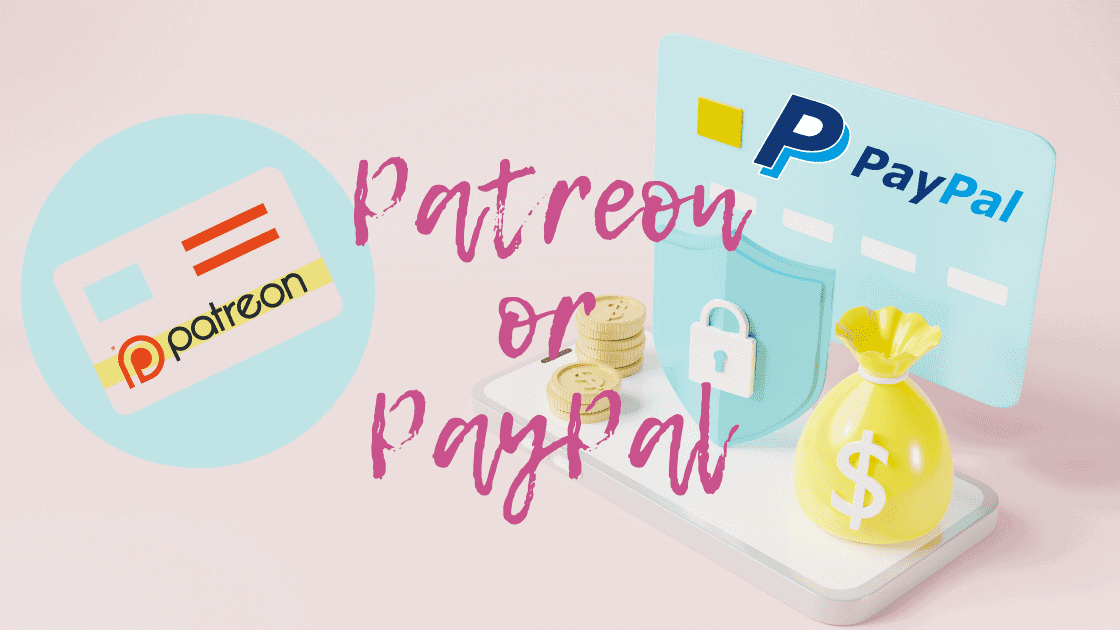Regardless of the type of content, all streamers have the right to earn from their creative efforts. There are lots of ways to monetize your channel or blogging website. You can run ads, be an influencer for a brand, or go into affiliate marketing.
A content creator could also make more by receiving donations or a set amount from their fans, viewers, or subscribers. And the reaction so far has been encouraging; people willingly support content creators with the payment to show appreciation. Some creators also go as far as making their content viewable for only paid subscribers.
Receiving donations is a great idea, and it’s what every content creator should consider. The slight problem is what platform or service to use to accept the donations. In this article, we’ll be reviewing two platforms that can be used; Patreon and PayPal. We’ll see the pros and cons of each service.
Patreon is an American membership platform founded in 2013. It provides payment solutions and business tools for content creators to run subscription services for their channels. Patreon is open to content creators, including writers, podcasters, gamers, YouTubers, musicians, and webcomic artists.
After registration, Creators can set up subscription payment pages through which they receive a fixed amount from their patrons(audience) by offering a piece of art or any content. With Patreon, a content creator could set the subscription to per month, per week, or even per content. You can also create subscription tiers for your followers.
On the other hand, PayPal is a fintech company that provides electronic commerce services to users. The platform can be used to send and receive money from clients. It can be used for processing payments on freelancing platforms. Also, content creators can use PayPal to collect subscription fees from their audience.
Crowdfunding using PayPal is a bit technical, and the platform is practically designed to collect one-time donations from your subscribers. However, with the help of developers, you could receive recurring payments.
The two platforms can both be used for running subscription campaigns. However, they do it differently, so they are unique and different. Let’s take a look into what each platform offers.
Patreon Vs PayPal
Platforms
Patreon and PayPal can work for whichever platform you’re sharing your content. Whether you’re a blogger using a WordPress website, or a Vlogger on YouTube, or a video game streamer on Twitch, these platforms can be of help. They both have customized plugins, codes, and third-party apps that can be installed or integrated to make them work for any platform.
There is an app directory section on Patreon to find all kinds of third-party apps, including MailChimp, Google Sheet, and Discord bots. Patreon is straightforward to use for all platforms and can be utilized in any part of the world. Moreover, they have the Patreon app supported by all Android and iOS devices. The only cons here is that you can’t use Patreon to get payments in your mobile apps.
PayPal is a viral ecommerce solution and has plugins and apps to receive subscriptions from all platforms, including WordPress, MailChimp, and YouTube. It also has a mobile app with a beautiful and functional web interface.
Services
Patreon is a complete crowdfunding and payment processing solution. Each content creator has a page to set up and monitor their subscription campaign. Also, the platform provides every content marketer with several communication tools that allow them to interact with their team or assistance and arrange reward distribution.
Also, for a higher Patreon subscription, you’ll get notable features such as the ability to offer different tiers of membership and also set a dedicated partner manager. Higher subscriptions also offer unlimited app integrations and analytics tools. However, these packages come at higher prices.
PayPal, in contrast, offers crowdfunding as one of its several financial services. Therefore, it took a different approach to this service. Unlike Patreon, PayPal does not have a particular page for content creators to manage their audience donations. Only Paypal users with a business account can run this campaign.
The content creator can only accept a one-time donation from their audience for the basic PayPal business account. You’ll have to upgrade your PayPal Payment Pro account or register for a Virtual Terminal account for recurring. These are the services PayPal offers regarding crowdfunding; you could get more by integrating third-party applications to your account that are available on the platform.
Features
As mentioned earlier, Patreon is specially created for the task. Aside from accepting subscription fees from your audience, you can also use Patreon to communicate with them and give special rewards to patrons. You can also make your contents viewable to some patrons or make it available to all.
Patreon is mainly utilized for recurring payments. However, you can also accept a one-time payment by using the Buy me a coffee payment option available on the platform. The wonderful thing about Patreon is that it has a community page where content creators discuss their problems with others and get support.
PayPal features support daily withdrawal of funds; unlike Patreon, users can only withdraw their earnings monthly. The big difference between the two platforms is that PayPal users need app integration such as MailChimp to share content and get feedback from their audience. So, PayPal users technically accept funds using the platform and send newsletters using a third-party app. Patreon has a landing page where patrons get content according to their subscription.
Fee
This is the part where people prefer PayPal over Patreon. Patreon fee is expensive and can also be considered unfair. The platform takes a 5% charge platform fee on every donation accepted by a content creator on the Lite subscription. The payment deductions go up to 8% for those on the Patreon Pro subscription and 12% for Patreon Premium users.
Content creators on Patreon are also charged for payment processing. On every donation of more than $3, the platform deducts 5%+$0.10. Besides, you can’t process your withdrawals using the platform. It’s either you use PayPal or Payoneer. The direct-to-bank withdrawal option is only available to content creators based in the US.
Aside from the deduction on every payment that comes in, Patreon users are also charged for Payouts. Paypal charges 1% for an amount between $0.25 to $20. International creators pay 3% on every transfer to the bank from their PayPal. Direct withdrawal from Patreon to US banks cost $0.25. Meanwhile, Payoneer charges $3 for Payout fee for international creators.
PayPal is still affordable compared to Patreon. For the regular business account, PayPal charges no Platform fee. However, for the Virtual Terminal account and PayPal Pro, users pay $30 monthly. And an extra $10 monthly for accepting recurring payments with any of the PayPal accounts. Payout on the platform costs 2% of the total transaction, set for a limit of $1 for US transactions and $20 for international transactions.
On deductions, PayPal is doing better than Patreon except for currency conversion. Patreon charges 2.5% of the total transactions for currency conversion, while PayPal charges 4%-5%. Moreover, PayPal conversion rate is usually less than the market rate.
Conclusion
You need to consider these two platforms if you want to earn from your hard work and creativity. PayPal and Patreon will help you build a paywall so that your audience will have to pay before they can access your content.
If you wish to spend less on this, PayPal is your choice. This platform will allow you to keep a more significant percentage of your profit. However, you should be ready to do most of the technical part yourself. Most importantly, the platform can only be used to accept a one-time subscription payment. For a recurring payment, you will have to pay an additional cost of $40.
Although Patreon is not fee-friendly, people still choose Patreon because it’s built for crowdfunding purposes. It has all the tools and features required to accept payment from your audiences easily. You can manage your campaign from a page and accept recurring payments without headaches or paying extra fees. Moreover, you can relax when there is any problem knowing that they will resolve it immediately.
Good luck with your selection. I hope to hear from you when you’re finally earning from your art. Please share this article with friends and families on your social media accounts if you enjoy it.








